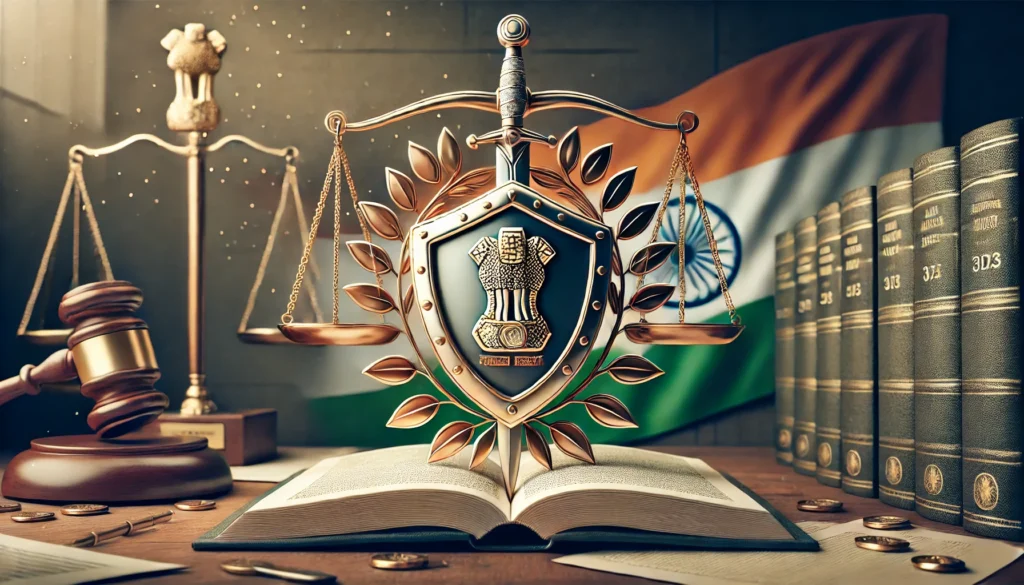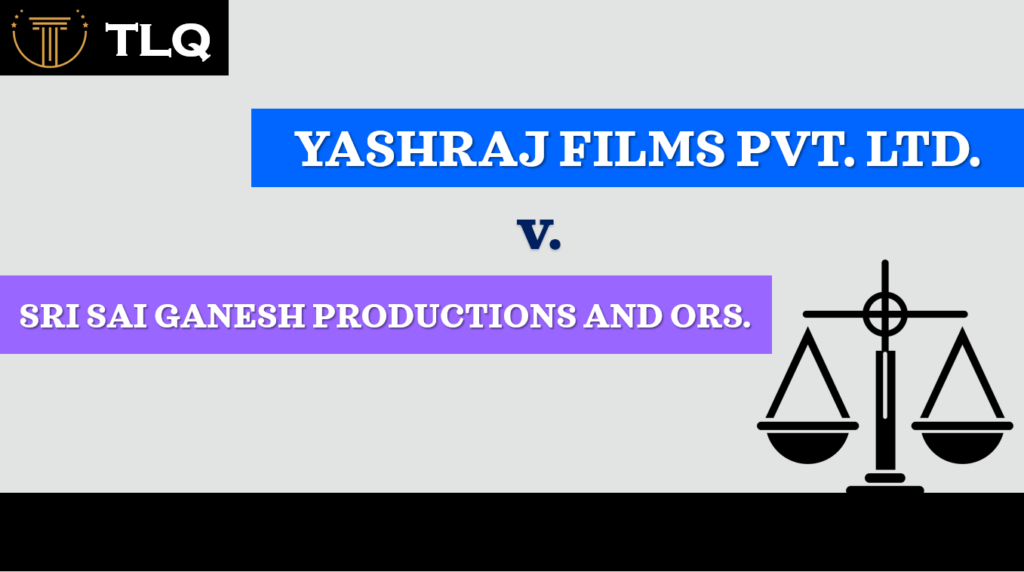Published On: 24th March, 2024
Authored By: Somitra Vardhan Dubey
DNLU (Dharmashashtra National Law University)
[A comment on Zaver Bhai v State of Bombay AIR 1954 SC 752]
INTRODUCTION
A legal doctrine known as the doctrine of repugnancy governs nations with a federal system of government, which divides authority between the federal government and state or provincial governments.
Three lists—the Union List, the State List, and the Concurrent List—provided in the Seventh Schedule to the Constitution, as per Article 246 [1]of the Constitution of India, have been used by the Indian Constitution to define the powers of Parliament and State Legislatures.
The List I of Schedule VII also known as the Union List, contains subjects on which only the Parliament can make laws, such as defence, foreign affairs, atomic energy, banking, etc.
The List II of Schedule VII also known as the State List contains subjects on which only the State Legislatures can make laws, such as public order, police, agriculture, and local government.
The Concurrent List or List III of the Seventh Schedule contains subjects on which both the Parliament and State Legislatures can make laws, such as education, forests, and electricity.
The article also gives the Parliament the power to legislate on any subject in the State List in the national interest, with the consent of the State Legislature concerned. This provision is known as the residuary power of legislation.
However, because of their unusual phrasing and the fact that they are subject to Acts of Parliament, which give rise to the theory of repugnancy, there has been a great deal of legal disagreement regarding the scope of certain entries.
Repugnancy is the term used for a conflict between two laws that, when applied to the same set of facts, have conflicting outcomes. When utilized in a contemporaneous field, it is used to describe discrepancy and incompatibility between federal and state laws. When two laws are so incompatible with one another that applying any one would mean breaking the other, this is known as a repugnancy scenario.[2]
FACTUAL MATRIX
The aforementioned case was referred to a 5-judge bench of the Supreme Court for the purpose of interpreting whether the Union law and State law both occupied the same field or not and to identify repugnancy. The bench consisted of M.C. Mahajan (C.J.), B.K. Mukherjea, Vivian Bose, B. Jagannadhadas and T.L. Venkatarama Ayyar.[3]
In this case, according to state legislation, the appellant’s crime of transferring food grains without authorization resulted in a 7-year sentence of incarceration. The Central Law, on the other hand, called for him to be imprisoned for a period of three years for the offense he committed. A further clause in the Central law stated that if the offender was found to be in possession of twice the legal amount of food grains, the sentence might be raised to seven years. The appellant argued that the court lacked jurisdiction because the Magistrate who penalized him could only sentence him to imprisonment for a maximum of three years and that he should have been controlled by the terms of the Bombay Act instead of the Central Act.[4]
LEGAL DISCOURSE IN THE COURT
The Judgment of the Court as delivered by T.L. VENKATARAMA AYYAR.
A bench made up of Bavdekar and Chainani heard the revision petition. According to Bavdekar, the changes to the Essential Supplies (Temporary Powers) Act, including the re-enactment of Section 7 in Act 52 of 1950, had no effect on the area covered by the Bombay Act 36 of 1947. However, Act 36 of 1947 and Act 52 of 1950 both dealt with the same subject and as Act 52 of 1950 was a Central law from a later time period, it superseded the Bombay Act 36 of 1947. This is according to Chainani, J. Act 36 of 1947 and Act 52 of 1950 both dealt with the same subject. Chagla, C.J., agreed with Chainani, J. that there was repugnancy between Section 7 of Act 52 of 1950 and Section 2 of the Bombay Act 36 of 1947 and that under Article 254(2), the former prevailed when the matter was brought up under Section 429 of the Criminal Procedure Code for hearing. The present appeal has been preferred against this judgment on a certificate under Article 132(1)[5]. The issue to be decided is whether Section 5(1) of the Bombay Food Grains (Regulation of Movement and Sale) Order, 1949, is punishable under Section 2 of the Bombay Act 36 of 1947, in which case the trial by the Resident First Class Magistrate would lack jurisdiction, or whether it is punishable under Section 7 of the Essential Supplies Act[6]. The court then ruled that because both laws covered the same territory, the state statute was null and void for being in conflict with the federal law.
JUDICIAL ANALYSIS
Nature of power to enact law between parliament and state legislature –
In a case resembling that under Section 107(2) of the Government of India Act[7], the court considered the nature of the Dominion Legislature’s power in regard to the Provincial Legislature. Lord Waston noted in Attorney-General for Ontario v. Attorney-General for the Dominion [8]that while a law passed by the Parliament of Canada and falling within its purview would supersede Provincial legislation dealing with the same subject, the Dominion Parliament lacked the constitutional authority to pass a law directly repealing any Provincial statute. According to Section 107(2) of the Government of India Act, it would appear that this was the situation with regard to the topics listed in the Concurrent List. Now that the Constitution has expanded the powers of Parliament through the proviso to Article 254(2), Parliament is able to do what the Central Legislature was unable to do under Section 107(2) of the Government of India Act: enact legislation that adds to, amends, varies, or repeals a State law when it relates to a topic on the Concurrent List. According to this interpretation of the Constitution, Parliament may repeal a state law by acting in accordance with the proviso of Article 254(2). The State law will be void under that clause even if it does not clearly state that it will be if it clashes with a later “law with respect to the same matter” that may be passed by Parliament.
ARTICLE 254[9]
Conflicts between laws passed by the Indian State Legislatures and laws passed by the Parliament are addressed by the notion of repugnancy. Article 254 of the Indian Constitution outlines this principle.
Guidelines for resolving disagreements between laws passed by the State Legislatures and laws passed by the Parliament are provided by the theory of repugnancy. It is applicable in situations where the State Legislature and the Parliament both have the authority to pass laws on the topic on which both the Parliament and the State Legislatures can pass laws, i.e., the subjects mentioned in concurrent list.
Clause 1 of this Article provides the following:
“If any provision of a law made by the Legislature of a State is repugnant to any provision of a law made by Parliament which Parliament is competent to enact, or to any provision of an existing law with respect to one of the matters enumerated in the Concurrent List, then, subject to the provisions of clause (2), the law made by Parliament, whether passed before or after the law made by the Legislature of such State, or, as the case may be, the existing law, shall prevail and the law made by the Legislature of the State shall, to the extent of the repugnancy, be void.”
In simpler terms, according to Clause 1 of Article 254, if a provision of a law passed by the State Legislature conflicts with a provision of a law passed by the Parliament on a subject covered by the Concurrent List, the law passed by the Parliament will take precedence.
This means that the law made by the State Legislature will be void to the extent of the repugnancy.
It is important to note that this rule applies only to matters that fall within the Concurrent List. In the event of a conflict between legislation passed by a State Legislature and a law passed by the Parliament regarding a subject covered by the State List, the State Legislature’s law will take precedence.
Clause 2 of this Article provides the following:
“Where a law made by the Legislature of a State with respect to one of the matters enumerated in the Concurrent List contains any provision repugnant to the provisions of an earlier law made by Parliament or an existing law with respect to that matter, then, the law so made by the Legislature of such State shall, if it has been reserved for the consideration of the President and has received his assent, prevail in that State.”
In simpler terms, Clause 2 of Article 254 states that if a State Legislature has made a law on a matter that falls within the Concurrent List and that law is repugnant to a law made by the Parliament on the same matter, then the State law will prevail over the Parliament law if the State law has received the assent of the President of India.
In other words, if the President signs off on a bill passed by the State Legislature, that law will have precedence in that State even if it conflicts with a law passed by the Parliament. However, even though the State law was passed more recently if the President refuses to give his approval to it, the law passed by the Parliament will take precedence.
CONCLUSION
In conclusion, the judgment of this particular case is of significance due to the involvement of a conflict between the central and state legislation. The constitution has extensively divided the powers between the state and the central government but still, there are various fields such as in the concurrent list which invoke the dispute regarding which law would be implemented over another. And in order to counter this issue, the constitution has also provided us with its solution and that is article 254, under which the law enacted by the Parliament will take precedence over a provision of a law issued by the State Legislature if both laws are on the same subject covered by the Concurrent List. As a result, the State Legislature’s legislation will be null and void to the extent of its repugnance. However, if the state law is able to acquire the President’s assent, then it will prevail.
Also, having critically analyzed the judgment, it could be concluded that there was a difference between the opinions of the two judges, Bavdekar and Chainani, one of whom claimed that there was no dispute between the state and central law while the other claimed the opposite due to which the contention was settled when J. Chagla agreed with Chainani that both the laws overlapped each other. However, when the decision to file an appeal was made, the Supreme Court came to the conclusion that the only ground raised as posing a significant constitutional interpretation issue was whether or not the Bombay Act of 1947 was unconstitutional and void under Article 254 of the Constitution. The court denied the appellant’s request to make this argument because no additional issues were brought forth in this petition. As a result, the appeal was rejected and dismissed.
REFERENCES
- ARTICLE 246 – “Subject matter of laws made by Parliament and by the legislatures of states.”
- https://blog.ipleaders.in/need-know-doctrine-repugnancy/
- Saverbhai Amaidas v. State of Bombay, (1955) 1 SCR 799
- https://indiankanoon.org/doc/345466/
- ARTICLE 132 – Appellate Jurisdiction of Supreme Court in Appeals from High Courts in Certain Cases.
- Section 7 of the Essential Supplies Act – Penalties
- Section 107(2) of the Government of India Act – Inconsistency between Federal laws and Provincial, or State, laws.
- Attorney-General for the Dominion of Canada v. Attorney-General for Ontario
Judicial Committee of the Privy Council – [1897] A.C.
- Article 254 – Inconsistency between laws made by Parliament and laws made by the Legislatures of States
[1] ARTICLE 246 – “Subject matter of laws made by Parliament and by the legislatures of states.”
[2] https://blog.ipleaders.in/need-know-doctrine-repugnancy/
[3] Saverbhai Amaidas v. State of Bombay, (1955) 1 SCR 799
[4] https://indiankanoon.org/doc/345466/
[5] ARTICLE 132 – “Appellate Jurisdiction of Supreme Court in Appeals from High Courts in Certain Cases.”
[6] 7. “Penalties”
[7] Section 107(2)
[8] Attorney-General for the Dominion of Canada v. Attorney-General for Ontario
Judicial Committee of the Privy Council – [1897] A.C.
[9] Article 254. “Inconsistency between laws made by Parliament and laws made by the Legislatures of States”




